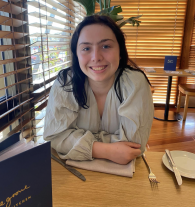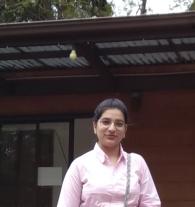Due to the current situation we are experiencing significant demand for tutoring. Fast track your enrolment online:
Enrol Online Now

Working with Children Check
 Verified Tutor
Verified Tutor
 Verified Tutor
Verified Tutor

What do I enjoy most about tutoring? 😁
I enjoy building connections with students and seeing their confidence grow as they overcome challenges. It’s incredibly rewarding to witness a student’s progress, whether it’s mastering a difficult concept or achieving better results in school. I also find satisfaction in adapting my teaching strategies to suit each student’s individual learning style, ensuring that the lessons are engaging and effective.My Strengths as Tutor 💪
1. Personalized Approach: I am skilled at assessing individual learning needs and tailoring lesson plans to meet specific goals. This ensures that students receive targeted support where they need it most. 2. Strong Communication: I excel at explaining concepts clearly and maintaining open communication with both students and parents, keeping everyone aligned on progress and strategies. 3. Empathy and Patience: I create a positive and supportive environment where students feel comfortable asking questions and making mistakes, which is crucial for building their confidence. 4. ReliabilityMost important things I can do for a student 🏅
1. Build Confidence: Help students believe in their own abilities by encouraging a growth mindset and celebrating their progress. 2. Provide Tailored Support: Adapt teaching methods to align with the student’s unique learning style and pace, addressing their specific challenges. 3. Foster Independence: Equip students with learning strategies and problem-solving skills that enable them to succeed on their own. 4. Create a Positive Environment: Build a trusting relationship where students feel safe to ask questions, make mistakes, and grow academically and personally.Tutoring students in 👦 👧
- year 7
- year 8
- year 9
- year 10
- year 11











Recent Tutoring Comments:
Labiba has made fewer calculation mistakes and is now able to quickly identify which formula to use for most trigonometric problems.
Labiba has made fewer calculation mistakes and is now able to quickly identify which formula to use for most trigonometric problems.
Since Labiba missed the lesson on the ambiguous case for the Sine Rule, she is not yet very confident when solving SSA cases. Please refer to the method I summarised. If you encounter an SSA question in the exam, be sure to first determine how many possible solutions there are before doing any calculations, to avoid missing any answers. (I recommend practising with all remaining questions from 11D.3 Q3.) Please note that the basic tan function is only used for right-angled triangles. When applying the Cosine Rule, pay attention to whether you're solving for a side or an angle. If solving for an angle, remember to use the inverse trigonometric function to find the actual angle. In application problems involving two unknowns, remember to use simultaneous equations to solve them (see the method used in 11E Q1, and try to complete 11E Q5 independently for reinforcement)
Eliza stayed focused throughout the session, except for the last ten minutes, and performed very well. While working through her school workbook, she was able to ...
Eliza stayed focused throughout the session, except for the last ten minutes, and performed very well. While working through her school workbook, she was able to solve new problems by referring to similar previous ones and could identify connections between different questions. Her proficiency in calculating the greatest common factor also improved.
When solving similar problems, Eliza needs to refer back to the steps of the previous question and is not yet able to complete multi-step problems independently without guidance. This results in a slower problem-solving pace, and she sometimes needs prompts at key steps to continue. This still requires repeated practice to reinforce her memory. I plan to dedicate the first 20 minutes of each session to reviewing previous content to ensure continuity in learning.
Labiba is proficient in using trigonometric functions and can quickly identify which function to apply in different situations. She is also able to understand ...
Labiba is proficient in using trigonometric functions and can quickly identify which function to apply in different situations. She is also able to understand application problems efficiently. We finished the school homework ahead of time and also previewed the sine rule and cosine rule, along with some extra exercises to deepen her understanding.
Labiba performed very well in this session, with just a few small suggestions: when calculating angles, first find the value of the trigonometric function, then move to a new line to use the inverse function (such as when calculating the degree of angle A—first calculate sin?A / cos?A / tan?A, then on the next line, apply arcsin / arccos / arctan). When dealing with complex shapes involving multiple unknowns, start by solving the right-angled triangle that has two known elements. Also, remember that for right-angled triangles, we usually use basic trigonometric ratios (sin, cos, tan), while for non-right-angled triangles, we generally apply the Sine Rule and Cosine Rule
Isobel was willing to engage at the beginning, and compared to the last lesson, was more open to asking questions.
Isobel was willing to engage at the beginning, and compared to the last lesson, was more open to asking questions.
When Isobel realizes she can't keep up with Eliza's pace, she tends to feel frustrated. In these moments, even when I encourage her to ask questions, she remains silent, though I can tell she has doubts. Since the two sisters have very different learning paces, I recommend hiring a separate tutor for Isobel. Additionally, a shorter but more frequent tutoring schedule might help her progress faster without feeling overwhelmed.